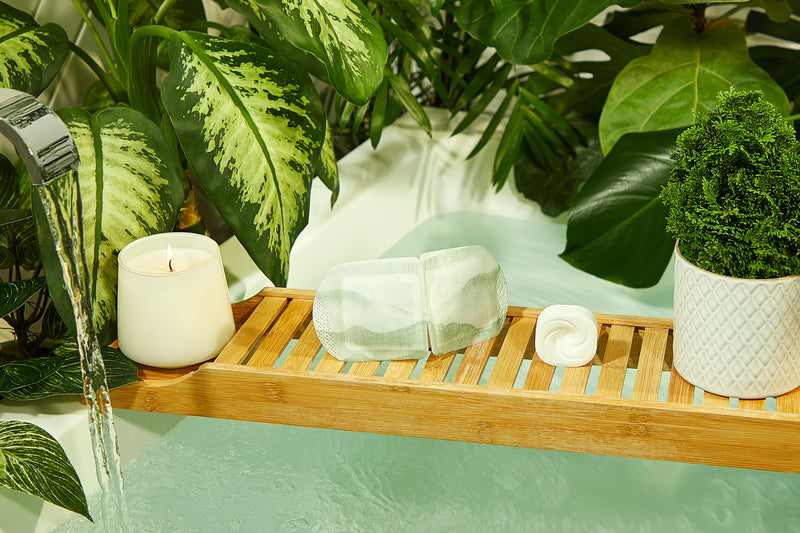4 BEST WAYS TO SOOTHE DRY HANDS
They’re your vessels of touch and connection—and so worthy of TLC. We rounded up easy, dermatologist-approved remedies for treating and caring for irritated hands—even when skin is eczema-prone.

2020 transformed us into a society of extra-diligent hand washers, which has led to a lot of very dry hands and many frustrated efforts trying to restore to their former glory. As a result, “dry skin on the hands is a chief complaint in our dermatology office,” says Rina Allawh, M.D., a dermatologist at Schweiger Dermatology Group in King of Prussia, PA.
That’s because our hands are constantly being washed, rinsed, and scrubbed. They’re often exposed to the elements, like sunlight and extreme temperatures. Unless you’re slathering on hand cream around the clock, it can be hard to keep up with the steady damage incurred throughout the day.
In fact, one study in the Journal of the American Board of Family Medicine found that hand dermatitis, also known as hand eczema, can occur in almost 10% of the general population. The main feature is a damaged skin barrier, which can fuel inflammation and increase transepidermal water loss (when water evaporates from the skin).
For some people, extremely dry hands are something of an occupational hazard. “Individuals who frequently wash their hands during the workday are more prone to hand rashes and dryness,” says Allawh. (Think: people who work in healthcare, with food, or with children.)
The good news is that your cleanliness should be commended, and the fixes for dry, itchy hands are easy to incorporate into your everyday habits.
How to Heal Dry Hands
1. Use reparative ingredients.
Look for a gentle hand wash designed to soothe and protect hands while it cleanses, featuring hydrating ingredients like glycerin (one of Allawh’s favorites).
Vitamin C may also be helpful, since a study published in the journal Current Problems in Dermatology shows antioxidants are key supporters of a protective skin barrier.
2. Turn down the temperature.
Much like a steamy shower can parch body skin, hot water can strip the natural oils from your hands—irritating them and making dry, cracked skin worse. Sorry, it won’t feel as enjoyable, but “wash your hands with cold or lukewarm water, and avoid hot water,” says Allawh.
3. Pat gently, don’t rub.
After washing and rinsing hands, “avoid vigorously rubbing them dry with a towel. The friction may worsen dry skin and redness, and make patches of hand eczema feel itchier,” says Allawh.
Also, make sure you’re using the softest type of towel. Cotton is best—particularly Turkish cotton—while muslin can be rough on skin. And while you might only think of thread count for your bed sheets, the higher you go for hand towels, the gentler on the skin.
4. Apply moisturizer while skin is still damp.
Hand cream is non-negotiable, since “repairing skin damage and maintaining the skin barrier are essential,” says Allawh. Her tip for the best results? After washing, apply cream when hands are mostly—but not fully—dry. That way, the hydrating agents in the hand cream can trap that water in the skin to prevent moisture loss.
What Not to Do When Your Hands Are Cracked and Dry
Just as there are do’s for keeping hands soft and smooth, there are definite don’ts. Here are three to keep on your radar, particularly when your hands are already raw or irritated.
DON’T use hand sanitizer 24/7.
Hand sanitizer is better than nothing when there’s no faucet nearby, but it shouldn’t be your go-to method of cleaning your hands. Sanitizers tend to be packed with alcohol—it’s what gives them those sanitizing properties in the first place. But in high concentrations, alcohol can dehydrate the skin.
If you're stuck between using hand sanitizer and none at all, opt for a gel or spray formula that has moisturizing ingredients, such as aloe, to buffer any drying effects.
DON’T do dishes without gloves.
Everyday chores like washing dishes after dinner can lead to dry hands over time. They’re not exactly elegant, but those floppy rubber gloves your mom used to wear can be a sink-time savior.
They’ll protect you from hot water and harsh suds often used to scrub dishes, and prevent already angry hands from going full-on scaly—and fresh manicures from fading too soon (one reason beauty editors swear by dish gloves).
DON’T forget to moisturize your fingers.
When applying hand lotion, the backs of the hands and knuckles get most of the attention, while fingers and cuticles often go ignored. But ragged cuticles around the nails can be a pain—literally and figuratively. You need to include them in the whole wash-dry-moisturize process.
After cleansing with a gentle hand wash, apply a dab of hand cream and work it into the whole hand, being sure to rub it over fingertips and around cuticles. Do this before bed, too, so the cream can soak in while you sleep.
ADDITIONAL SOURCES:
Hand Dermatitis Study: Journal of the American Board of Family Medicine. (2009.) "Hand Dermatitis: Review of Etiology, Diagnosis, and Treatment." jabfm.org/content/22/3/325
Vitamin C Study: Current Problems in Dermatology. (2001). "The Antioxidant Network of the Stratum Corneum." pubmed.ncbi.nlm.nih.gov/11225199/



